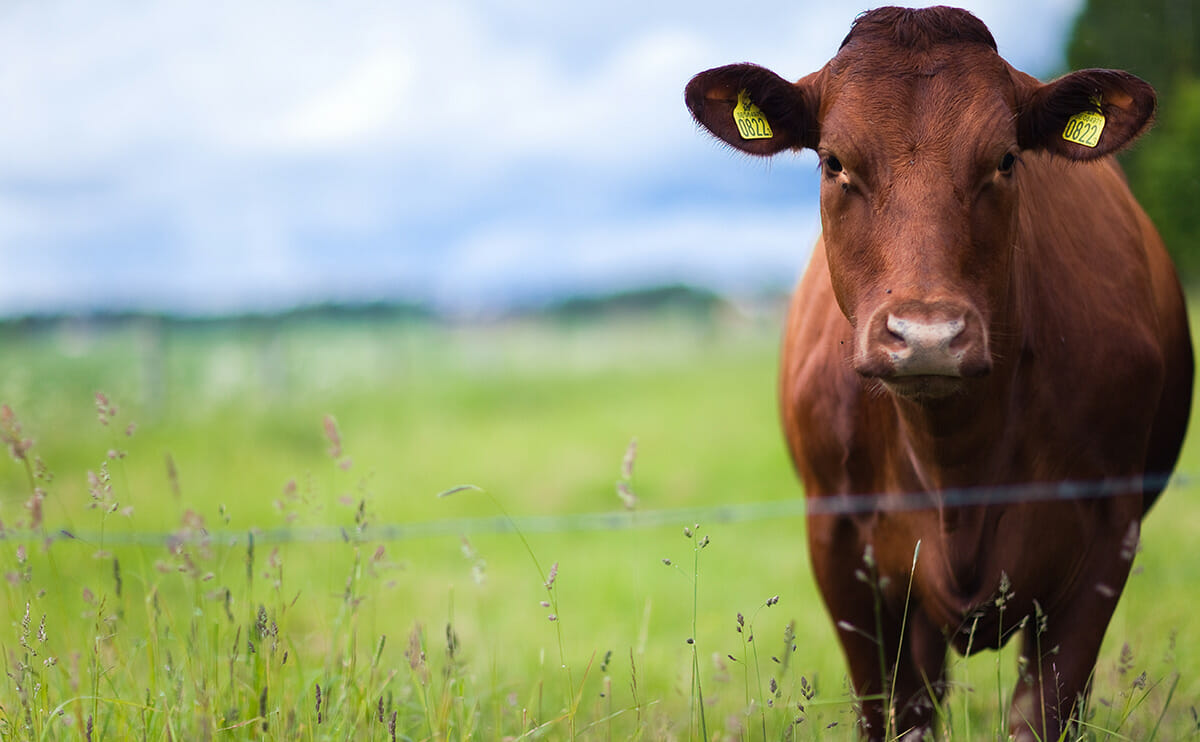Anemia, weakness, and jaundice: those are three symptoms of anaplasmosis, a disease that’s causing some big headaches for Texas cattle farmers right now. Transmitted through biting insects like ticks and passed between animals by infected ear taggers, needles, dehorners, and castrating equipment, anaplasmosis was a major problem for western cattle farmers in the early 20th […]

Anemia, weakness, and jaundice: those are three symptoms of anaplasmosis, a disease that’s causing some big headaches for Texas cattle farmers right now. Transmitted through biting insects like ticks and passed between animals by infected ear taggers, needles, dehorners, and castrating equipment, anaplasmosis was a major problem for western cattle farmers in the early 20th century. Better tick control and treatment with antibiotics in the 1980s and 1990s saw incidents of the disease decrease, but its number of cases have been increasing over the past decade. Now, cattle farmers are facing a spike in the illness, which is causing particular concern among Texas farmers who are trying to repopulate their herds following a severe drought. To learn more, we spoke with Grant Dewell, DVM, an assistant professor at Iowa State University’s School of Veterinary Medicine.
MF: So how big an issue for cattle farmers is anaplasmosis right now?
GD: It’s a disease that is common from Texas all the way to Iowa. At certain time frames we can see more of a problem with one state than another. The potential is anywhere, but right now we’re not seeing it up in the northern part of the country.
‘In the last ten years it’s really spread because all of a sudden cows that were in, say, Louisiana end up in Iowa or Texas, so we’re getting a lot more incidents.’
MF: Why has the number of cases increased over the past decade?
GD: There are a couple of issues. One of the primary things anaplasmosis is spread by is biting insects, which have a fairly limited geographical area. So historically, the disease has moved fairly slow. But the way we move cattle now all over the country, in the last ten years it’s really spread because all of a sudden cows that were in, say, Louisiana end up in Iowa or Texas, so we’re getting a lot more incidents.
MF: So how can farmers adapt to this kind of challenge?
GD: I can speak for Iowa: historically, it’s been more of an isolated incident, but starting four years ago became a recurring problem here; we’re in the southern part of the state, where it’s an endemic problem. Farmers are learning how to live with it and prevent it — when it first showed up, some farmers didn’t worry about it. Now that it’s back, they’re changing their practices to deal with it, through management and preventative antibiotics. We try to minimize biting insects and [improve] sanitary techniques. Historically, we would use the same needle for 15 to 20 cows; now, we use a new needle every time.
MF: Cows can be carriers without developing symptoms of the disease, right?
GD: The bacteria itself causes loss of red blood cells. Younger cows will have enough bone marrow response so that they don’t show symptoms. One their immune system recognizes [the bacteria] they become an infected carrier but keep it under control so there are no symptoms. In older cows that are six, seven, eight years old, they don’t have the bone marrow reserves, so those are very sensitive. Once they’re infected they will stay infected until we can get them chemo-sterilized, where if we treat a cow for a 45-day period with antibiotics, we can get the bacteria completely out of her system.
MF: If a cow isn’t treated early on, is the disease a death sentence?
DG: Yeah, they can lose so many blood cells that they can’t carry oxygen. It’s very difficult to treat once than happens. You can’t get to a facility because they’re so weak they can’t stand; it’s almost impossible to treat them.
MF: Does meat from an infected animal pose any problems for humans?
GD: No, it does not because the bacteria wouldn’t survive the cooking process, and even if it did, the organism that affects cows is specific to them; even if a fly bit the cow and then bit you, it’s not going to affect you.
MF: Vaccines are reportedly available for anaplasmosis in other parts of the world; are they available here?
DG: Sometimes there is a vaccine available; the one vaccine company that used to make it had a conditional license from the USDA [that said] you could market it in certain states, but it was up to certain states whether they’d allow it in. Occasionally you can get an experimental vaccine; it won’t prevent cows from becoming carriers but it will prevent them from showing clinical signs and dying. It’s a very hard disease to control with a vaccine, so the USDA has never approved it. But with the problem in Texas, I would guess that one of the issues is that because of the drought they’ve had for several years they’ve probably imported a lot of cows to restock their ranches, and those cows are probably naive to the disease and so are more susceptible than cows that were there five years ago. So that would be one case where you could vaccinate the cows being imported into those ranches.